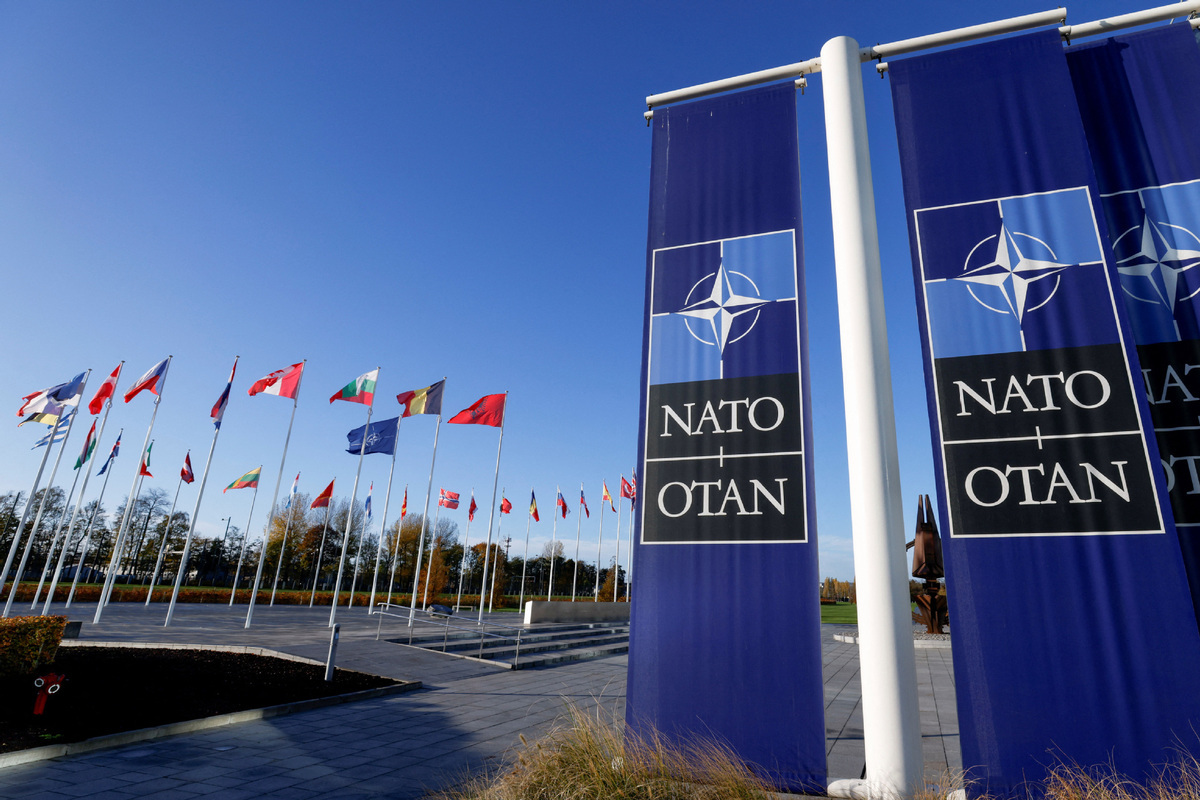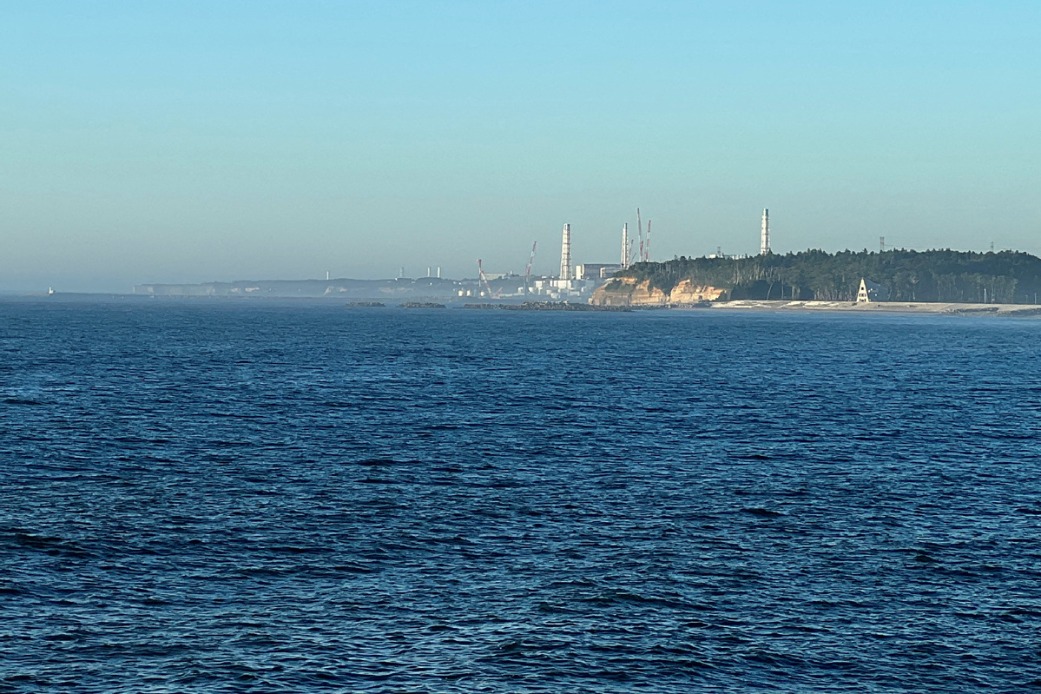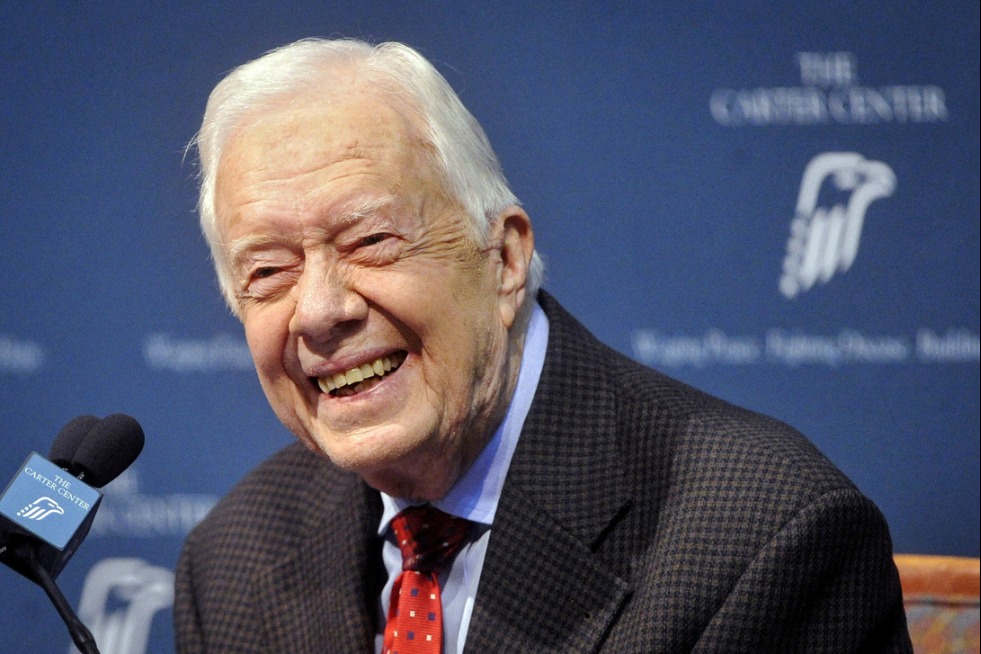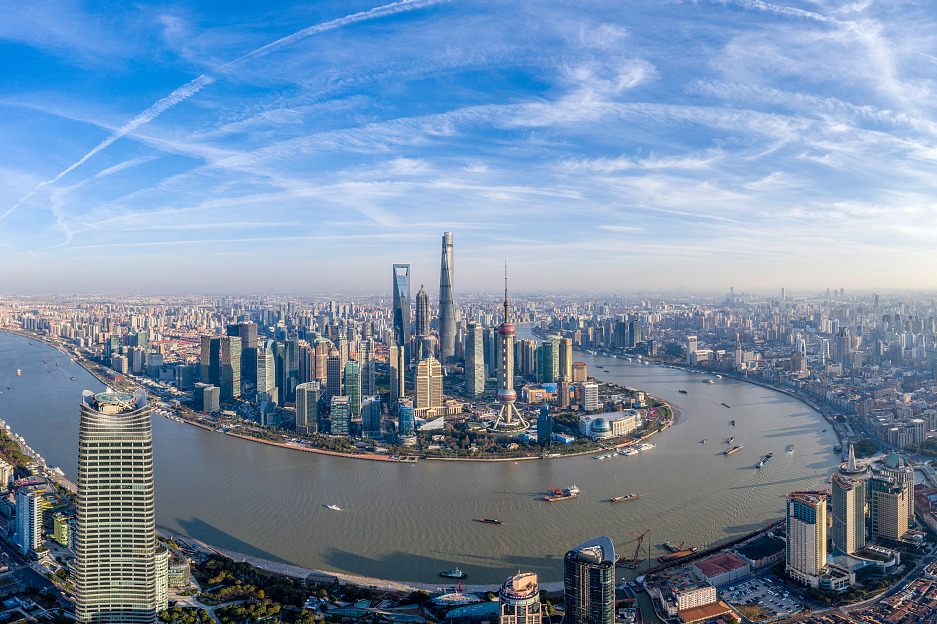NATO part of US ocean-front strategy


Across three oceans, the Atlantic, Indian and Pacific, and two fronts, the First Island Chain centered on Taiwan, and the Baltic to Black Sea Cordon centered on Ukraine, the United States has been trying to regain its global military dominance and political pre-eminence since former US president George W. Bush launched the disastrous "War on Terror" in 2001 to supposedly fight global terrorism.
Washington's strategy to thwart any power that has the potential to become a regional leader and threaten the US' global primacy is focused on the Eurasian super-continent in Eastern Europe to counter Russia and the Western Pacific to counter China.
Vacillating India in 'Indo-Pacific' strategy
Back in 1972, by acknowledging that "all Chinese on either side of the Taiwan Strait maintain there is but one China and that Taiwan is a part of China" in the Shanghai Communique, Washington fulfilled its need to establish a détente with China so it could disengage from Southeast Asia (the Vietnam War) in order to concentrate its efforts on thwarting the Soviet Union.
However, the US' 2016 "Indo-Pacific" strategy shows that it is desperate to curb China's rise but cannot do so without the help of Japan and India (or other major allies). The Quadrilateral Dialogue (or Quad which comprises the US, Australia, India and Japan) and AUKUS alliance (Australia, the United Kingdom and the US) are testament to the fact that, unlike Australia and the UK, Japan and India and are not mere US auxiliaries in the implementation of the "Indo-Pacific" strategy.
Despite US inducements and coercion, India has been promoting multipolarity and de-dollarization. And apart from maintaining, rather strengthening, its energy and arms trade with Russia despite the Russia-Ukraine conflict, India has also become more influential globally thanks to its participation in the Quad, the Shanghai Cooperation Organization and BRICS (Brazil, Russia, India, China and South Africa).
While India's participation is limited in the US-led Indo-Pacific Economic Framework, it has not joined regional multilateral trade arrangements such as the ASEAN-led Regional Comprehensive Economic Partnership or the Japan-led Comprehensive and Progressive Agreement for Trans-Pacific Partnership.
Japan faces deep structural challenges
Japan has much to gain from promoting trade and investment with India, and sees mutual security benefits in promoting the Sea Lines of Communication across the Indian Ocean. Yet Japan faces deep structural challenges including, a depreciating currency, rising import costs for food, energy and industrial inputs, declining exports, increasing current account deficits and massive public debt. For example, Japan's vehicle export industry lags years behind China's BYD and the US' Tesla in electric vehicle manufacturing and exports. Also, Japan's internal combustion engine vehicle exports have dropped, and Toyota has become the world's most indebted auto company.
True, "Abenomics" failed to revive Japan's economy. But former Japanese prime minister Shinzo Abe's quest to remove Article 9 from Japan's pacifist Constitution and embark on full rearmament has been progressing rather well with the tacit support of the US.
Also, Japan's refusal to sign a peace treaty with the Soviet Union in the past, and its support to the US-led sanctions regime, point to its long-held hope in gaining an upper hand in Japan-Russia's dispute over the islands known as the Southern Kurils in Russia and the Northern Territories in Japan, all of which have important security advantages and significant economic resources.
Continuation of NATO's enlargement policy
The US retreat from Afghanistan and the collapse of its Central Asia campaign prompted NATO to shift its line of operations to Russia's western periphery along a line of NATO states from the Baltic Sea to the Black Sea and involve Estonia, Latvia, Lithuania, Poland, Slovakia, Hungary, Romania, Bulgaria, Greece and Turkiye.
Despite the reticence of Hungary and Turkiye, NATO's proxy war in Ukraine — portrayed by NATO as an act of "self-defense" and by Russia as a continuation of NATO's enlargement policy — is being sustained by Ukrainian blood, and the supply of money, materials, arms, intelligence, mercenaries and training by the US and other NATO members and allies. Incidentally, the supply of money and materials is aided by the most stringent sanctions campaign and the US' theft of Russia's foreign reserves.
Yet the Russia-Ukraine conflict can also be seen as NATO's rear-guard action to counter the growing closeness and influence of the eight member states of the Shanghai Cooperation Organization: China, Russia, Kazakhstan, Kyrgyzstan, Tajikistan, Uzbekistan, India and Pakistan. Of special concern to the US and NATO is the EU's continued import of energy from Russia and increasing supply of manufactured goods and advanced telecommunications equipment from China.
Also causing concern to Washington is the expanding infrastructure connectivity thanks to the development of the Belt and Road Initiative, which links the SCO member states with their EU counterparts and sustains increasing volumes of East-West trade and investment.
Moreover, the growing desire of EU states, under the leadership of former German Chancellor Angela Merkel and, later, French President Emmanuel Macron to gain "strategic autonomy" after Bush launched the "War on Terror" was seen in Washington as a serious threat to NATO's cohesion and the US' ability to counter the growing influence of Russia and China.
As a result, the US expanded the reach of its political campaigns in the EU to re-impose its centrality in NATO, strengthen NATO's military alliance and promote the sale of US energy. As for Brexit, which Washington openly supported, it accelerated the UK's economic decline, though it ensured the UK retained its United Nations Security Council seat.
But the sacrifice of the wider national interests of the 27 EU member states for the benefit of the US was inconsistent with the EU's inclusive and mutually beneficial policy. In fact, Brexit helped expand the US' influence in the EU and NATO by undermining the EU and increasing the UK's dependency on the US. On its part, the US has supported the EU's expansion always on condition that the European bloc supports NATO's expansion.
US propaganda about Germany's over-dependence on Russian energy and the importance of NATO was launched before the resignation of Merkel as German chancellor, which saw the Christian Democratic Union replaced by a weak "traffic light" coalition of the Social Democratic Party of Germany (SPD), Free Democratic Party (FDP) and the Green Party — the first three-party coalition government in Germany since the end of World War II.
The new coalition government in Germany acquiesced to US demands and reversed its decision on both Nord Stream 2 and NATO's involvement in Ukraine.
Nord Stream 2 stretches for 1,200 kilometres from Vyborg in Russia through the Baltic Sea to Lubmin in Germany, bypassing Ukraine and Poland. It was expected to expand the Nord Stream I line and double the annual supply of Russian gas to 110 billion cubic meters.
Germany, France vital for EU's autonomy
However, German Chancellor Olaf Scholz resisted the US' coercion for some time, and the US demands for ever more German weapons and money for Ukraine, but has increased Germany's defense spending, especially on F-35 fighters, undermining the EU's defense/aero-space sector and creating long-term dependency on the US defense industry and the Pentagon. Germany's economy remains durable, though, in spite of the rising energy costs and tougher global competition.
However, like Japan, Germany's auto-manufacturing sector lags years behind BYD and Tesla. As a matter of fact, the auto-sector in the EU could experience a wave of bankruptcies and restructuring, not to mention that Volkswagen has become the world's second-most indebted corporation — after Toyota.
Many of Germany's largest automakers have struck deals with China to make and supply cars, car parts and car systems. Scholz visited China before the G20 Summit in Bali in 2022 with the aim of strengthening Sino-German commercial ties. And more recently, with support from the French, Scholz complained bitterly about the huge amount of subsidy the US administration pays to automakers and the inflated US energy prices, saying they undermine EU restructuring efforts and post-pandemic recovery.
Macron's strong support for the EU's strategic autonomy and opposition to the US' policy on NATO and Russia were targeted by a US campaign to weaken his chances of being re-elected French president in 2022. The US also engineered the cancellation of two multi-billion-euro defense contracts: Australia cancelled the AUD90 billion ($63.48 billion) submarine deal with France and formed AUKUS with the UK and the US under which the latter two will assist Australia to acquire nuclear-powered submarines by the mid 2030s and replaced the Airbus MRH90 Taipans currently used by Australia's military by the US-built Blackhawk helicopters.
The US also tried to coerce and cajole Greece into cancelling a €3 billion ($3.25 billion) deal to buy French frigates and instead purchasing US-made combat frigates, which the Greeks eventually declined.
All this forced Macron to go to the polls despite the loss of revenues worth tens of billions and thousands of jobs, and the violent demonstrators by the Yellow Vest protesters against the increase in petrol tax. While Macron won the presidential election in the second round, his party couldn't gain majority in the parliamentary elections, with no party winning absolute or simple majority for the first time since 1988, which has constrained his political program during his second term in office but expanded US influence.
US hard to drives wedges between China, ASEAN
In the Association of Southeastern Asian Nations, too, the US has been trying to occupy center stage by inducing, coercing and/or cajoling six ASEAN member states (Singapore, Brunei, Vietnam, the Philippines, Thailand and Malaysia) to sway the bloc toward isolating Myanmar, Cambodia and Laos. The US' efforts to drive a wedge between ASEAN and other economies as well as divide ASEAN has prompted some ASEAN member states to delay or refuse to sign the China-sponsored South China Sea code of conduct and develop closer diplomatic and commercial ties with China's Taiwan.
Indonesia, which will be ASEAN chair in 2023, is firmly opposed to the AUKUS and nuclear proliferation. In fact, the US' plan to provide nuclear capability for Australia has unleashed pro-nuclear forces in Indonesia, Vietnam, Japan and South Korea.
While China and ASEAN are each other's largest trade partners, the US claims to be the largest investor (re-investor) in the region. To counter China and consolidate its presence across the region, the US has been building a network of political programs that targets ASEAN youth, spreads negative stories about China, Russia and Myanmar via mass media and social media campaigns, openly supports opposition parties and candidates and selectively uses human rights to justify restrictions and sanctions to coerce uniformity.
No wonder political elites across the region are worried that the US narrative on democracy wrapped in a human rights and rules-based order cover will threaten political stability in the region. They also say that these are an attempt by the US to gain centrality in ASEAN and to check China's dynamic economic development.
The simplistic US narrative of a Hobbesian struggle between democratic and authoritarian states obscures the US grand strategy of divide and rule, which it has used with some degree of success, to embroil itself and Europe in a proxy war with Russia over Ukraine. The US-NATO proxy war is designed to weaken and/or subjugate Russia, so the US can concentrate its still formidable resources toward curbing China's rise and eventually subjugating it.
However, the tide of history does not support the thesis that the US, despite all its power, can overcome all opposition in its quest to consolidate its hegemony. The political, economic and social decline of the US must contend with the shrinking wealth and power of its allies and the rapidly expanding political and economic forces coalescing in the Global South.
The US will remain a key pole in the global order, but it could be shorn of its exorbitant privilege of controlling the global reserve currency. In the final analysis, the US' "three oceans and two fronts" grand strategy is like the last but feeble roar of a paper tiger as its century of global dominance, comes to an end and the world transitions toward multipolarism and equitable distribution of global resources.
The author is a political analyst and senior special adviser, International Relations Institute, Royal Academy of Cambodia. The views don't necessarily reflect those of China Daily.


































